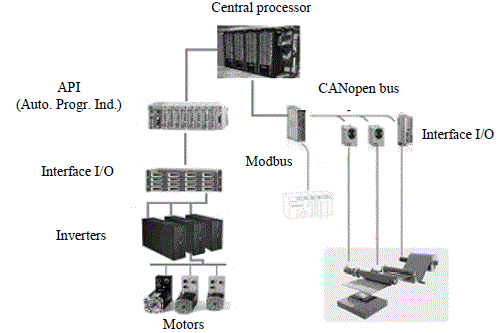Chapter 4
Drive Controls with Synchronous Motors 1
4.1. Introduction
The speed (and/or position) control of an electric motor is often the ultimate aim of its control. The industrial applications of this device are countless: for machine tools, for robots and for special machines. Each time a production machine works, the motor is fulfilling this task. We talk about an “axis” for these applications, because a robot has “six axes”, when it can set a tool in a certain point of the space (three dimensions) with a certain direction (three other dimensions). One motor per axis is necessary. A special machine can gather tens of axes, and a production factory, hundreds or even thousands: each operation has its axis. The motors in charge of this operation must quickly and efficiently move the tools. Figure 4.1 shows an example of a “multi-axis” control system. In this chapter, we will mainly take a look at the speed control, with a short presentation of the position control.
Indeed, the industry of equipment goods‘ production supplies “electronic speed variators”, comprising the motor, its supply (the static converter) and its speed control: traditionally, with the help of a high level decision-making element, the user supplies the speed reference, frequently coming from a position control.
Figure 4.1. Example of an industrial multi-axis control (see [JOU 02])

The speed control of an ...
Get Control of Synchronous Motors now with the O’Reilly learning platform.
O’Reilly members experience books, live events, courses curated by job role, and more from O’Reilly and nearly 200 top publishers.

